|
|
|
Sort Order |
|
|
|
Items / Page
|
|
|
|
|
|
|
| Srl | Item |
| 1 |
ID:
168949
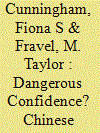

|
|
|
|
|
| Summary/Abstract |
Chinese views of nuclear escalation are key to assessing the potential for nuclear escalation in a crisis or armed conflict between the United States and China, but they have not been examined systematically. A review of original Chinese-language sources and interviews with members of China's strategic community suggest that China is skeptical that nuclear escalation could be controlled once nuclear weapons are used and, thus, leaders would be restrained from pursuing even limited use. These views are reflected in China's nuclear operational doctrine (which outlines plans for retaliatory strikes only and lacks any clear plans for limited nuclear use) and its force structure (which lacks tactical nuclear weapons). The long-standing decoupling of Chinese nuclear and conventional strategy, organizational biases within China's strategic community, and the availability of space, cyber, and conventional missile weapons as alternative sources of strategic leverage best explain Chinese views toward nuclear escalation. China's confidence that a U.S.-China conflict would not escalate to the use of nuclear weapons may hamper its ability to identify nuclear escalation risks in such a scenario. Meanwhile, U.S. scholars and policymakers emphasize the risk of inadvertent escalation in a conflict with China, but they are more confident than their Chinese counterparts that the use of nuclear weapons could remain limited. When combined, these contrasting views could create pressure for a U.S.-China conflict to escalate rapidly into an unlimited nuclear war.
|
|
|
|
|
|
|
|
|
|
|
|
|
|
|
|
| 2 |
ID:
133405
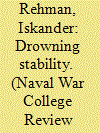

|
|
|
|
|
| Publication |
2012.
|
| Summary/Abstract |
In May 1998, the sun-scorched deserts of the Indian state of Rajasthan shook with a succession of nuclear explosions. Barely two weeks later, in a seemingly tit-for-tat response, Pakistan conducted its own series of detonations, in the remote western hills of Baluchistan. Both nations' previously concealed nuclear capabilities had suddenly burst out into the open, giving a new and terrifying form to the enduring rivalry that had convulsed the subcontinent for decades. Caught off guard, the international community reacted with indignation and dismay. Concerns over nuclear escalation in the event of another Indo-Pakistani conflict refocused Washington's attention on South Asia and triggered the longest sustained level of bilateral Indo-American engagement in history. This had the unexpected benefit of enabling both democracies finally to find common ground, after many years of acrimony, chronic mistrust, and squandered opportunities. Fears of mass terrorism in the wake of 9/11 and subsequent revelations of extensive proliferation emanating from Pakistan added urgency to Western desires to preserve a modicum of crisis stability in South Asia, as well as to prevent any form of escalatory behavior that could spiral into nuclear conflict or further the spread of radioactive material.
|
|
|
|
|
|
|
|
|
|
|
|
|
|
|
|
| 3 |
ID:
164664
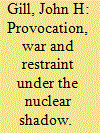

|
|
|
|
|
| Summary/Abstract |
The Kargil conflict was a limited war between India and Pakistan fought along the Kashmir Line of Control during the spring/summer of 1999. Named for the principal town in the combat zone on the Indian side, it was the first open warfare between India and Pakistan as declared nuclear weapons states and included the first combat employment of the Indian Air Force since 1971. Despite its intensity, it was also characterised by considerable restraint on both sides. The potential for conventional escalation, however, was high and the possibility of nuclear confrontation could not be excluded. It had significant long-term ramifications for both countries and constitutes an important part of the backdrop to their relations today.
|
|
|
|
|
|
|
|
|
|
|
|
|
|
|
|
| 4 |
ID:
153325
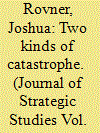

|
|
|
|
|
| Summary/Abstract |
China’s expanding strength and ambition may foreshadow a violent conflict with the United States. I describe two scenarios about how such a conflict would unfold. The article begins by examining the prospects for nuclear escalation, drawing on theories about politics, psychology, and inadvertent escalation. It then examines the prospects for protracted conventional war, a scenario that has received far less attention. I present a new theory of protraction based on technology, geography, and domestic politics. After assessing the logic of both scenarios against a hypothetical US–China conflict, I discuss which is more likely. The conclusion points to a sobering trade-off: efforts to avoid nuclear catastrophe increase the chance of a long and grueling fight.
|
|
|
|
|
|
|
|
|
|
|
|
|
|
|
|
| 5 |
ID:
152916
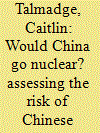

|
|
|
|
|
| Summary/Abstract |
Could a conventional war with the United States inadvertently prompt Chinese nuclear escalation? The military-technical threat that such a war would pose to China's retaliatory capability—combined with wartime perceptual dynamics that might cause China to view this threat in an especially pessimistic light—could lead to reasonable Chinese fears that the United States might be attempting conventional counterforce, or considering or preparing for nuclear counterforce. China might see several forms of limited nuclear escalation as its least-bad response to this sort of threat to its nuclear deterrent, notwithstanding the country's no-first-use policy. This finding, derived from a more general framework about the military-technical and perceptual drivers of potential nuclear escalation in response to conventional counterforce, has broader ramifications for U.S. policy and military strategy, and it illustrates recurring dilemmas that the United States may face in conventional wars with other nuclear-armed adversaries.
|
|
|
|
|
|
|
|
|
|
|
|
|
|
|
|
|
|
|
|
|